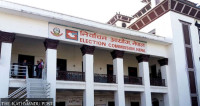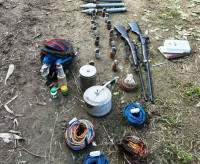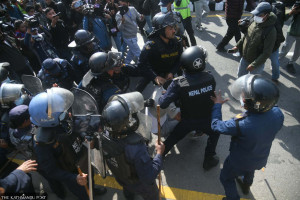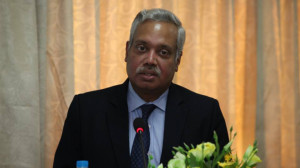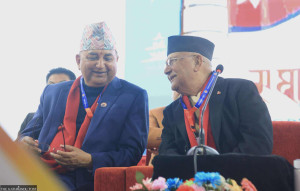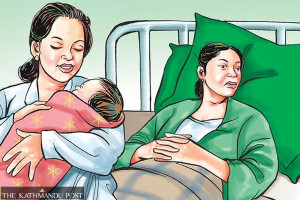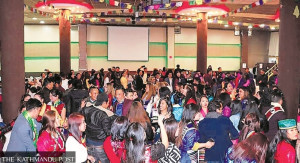National
Nepal and India holding boundary talks on July 27-29 in New Delhi
Discussions to focus on pillar repairs, field inspections, and cross-border land holdings.
Anil Giri
After a six-year hiatus, Nepal and India are resuming boundary talks on July 27–29 in New Delhi.
The seventh edition of the Boundary Working Group (BWG)—the highest-level bilateral mechanism tasked with fieldwork along the Nepal-India border—will convene in the Indian capital and decide on resumption of fieldwork and other technical tasks, according to officials.
“The meeting has been fixed,” said Lok Bahadur Chettri, spokesperson at the Ministry of Foreign Affairs. “It’s a regular meeting which was halted due to Covid pandemic.”
The BWG is tasked with construction, restoration, and repair of boundary pillars, clearing the no-man’s land, and other technical tasks, excluding the disputed areas of Susta and Kalapani.
In 2014, during the Nepal visit of Indian Prime Minister Narendra Modi, the two sides had agreed to form the BWG and that the boundary dispute in Susta and Kalapani would be addressed by foreign secretaries of Nepal and India with the help of the BWG.
Prakash Joshi, the director general of the Department of Survey, will lead the Nepali delegation in the meeting. Other participants will include representatives from foreign, home, defence, law, and land management ministries, along with some experts and representatives from the Armed Police Force.
In the last BWG meeting in Dehradun, India from August 28 to 30 in 2019, both sides had agreed to complete the remaining tasks in the border areas by the end of 2022. However, due to the intervening Covid pandemic, there could be no further meetings.
A follow-up meeting was delayed due to the pandemic and a subsequent boundary dispute between the two countries.
The resumption of the BWG meeting has been a key agenda item the Nepali side has been pushing in every high-level visit and meeting since the end of the pandemic.
India had been reluctant to hold the meeting of BWG particularly after the boundary dispute escalated between Nepal and India in 2019–20 following the release of a map by India by including the Kalapani area within Indian territory.
India used the Covid pandemic as an excuse for not holding the BWG meeting but it subsequently agreed to assign boundary-related tasks to the security agencies of Nepal and India. The Armed Police Force from Nepal and Sashastra Seema Bal from India are deployed along the border area and tasked with various activities, including joint patrolling, intelligence gathering, and conducting regular meetings with local officials from both countries to discuss border-related issues, and with protection of boundary pillars.
Though the Indian side has not shared the proposed agenda, a Nepali official who will participate in the meeting told the Post that the upcoming meeting will continue from where they left off in 2019. It will review progress made since the last meeting and resume field work, boundary inspection, maintenance and repair of boundary pillars and erect new pillars as per the terms of reference of the BWG.
The meeting will also carry out cross border inventory that is mandated to identify properties held by the citizens of both sides in each other’s territory and observe boundaries, boundary pillars, and erect new ones with the help of global positioning system or GPS, among other tasks.
The BWG is the continuation of another mechanism, the Nepal-India Joint Technical Committee formed in 1981, which made significant progress in scientifically mapping the Nepal-India border. In 2007, the committee produced 182 sheets of boundary maps using GPS, excluding the disputed areas of Susta in Nawalparasi West and Kalapani in Darchula. After its mandate ended in 2007, the BWG was established in 2014 to take over technical responsibilities.
According to officials, both sides were expected to resume fieldwork across the border and complete unfinished tasks from before 2019. Over the past six years, the Armed Police Force of Nepal and India’s Sashastra Seema Bal have carried out temporary maintenance of boundary pillars.
There are documented cases of Nepali nationals cultivating land on the Indian side and Indian nationals occupying and cultivating land within Nepali territory.
Data from Nepal’s Department of Survey shows that 8,554 boundary pillars have been installed along the border. Of these, 1,325 are missing and 1,956 are either partially or fully damaged.
Under the BWG, two supporting mechanisms—the Survey Officials’ Committee and the Joint Field Survey Teams—provide technical inputs and are mobilised on the ground.
After the end of the Covid pandemic, the foreign ministry sent several diplomatic notes to India to settle the boundary row.
In addition to such notes, successive foreign ministers, including the incumbent Arzu Rana Deuba, urged India to resume the BWG meetings at the earliest. The most recent Nepal-India Joint Commission meeting at foreign minister’s level, held in Kathmandu in January 2024, had also decided to reconvene the BWG.
The BWG is co-led by the Director General of Nepal’s Department of Survey and the Surveyor General of India. So far, six BWG meetings have been held. In 2017, both sides had finalised a comprehensive plan and timeline to complete boundary work within five years.




 19.12°C Kathmandu
19.12°C Kathmandu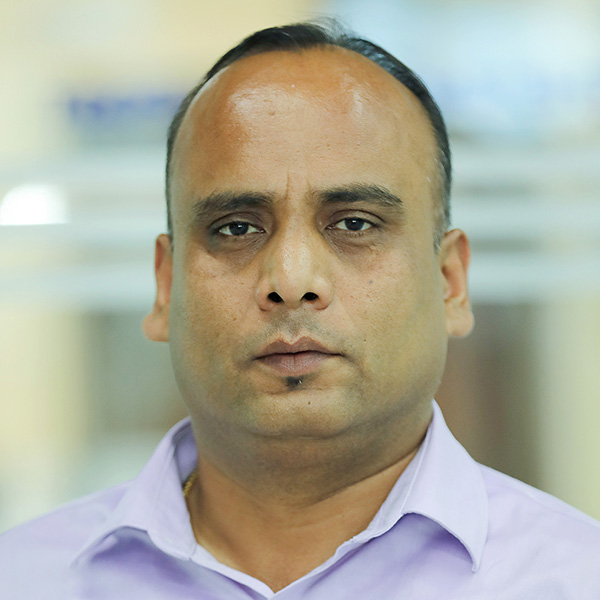

%20(1).jpg&w=200&height=120)

